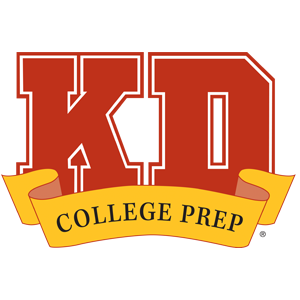When you need to learn new material, you can rely on the science of study to help you achieve the most effective results. Researchers have classified study techniques into classifications of highly, moderately, and slightly effective techniques.
In this blog, we go over the 10 most effective learning techniques and categorize them in terms of effectiveness.
What Are the Best Ways to Study?
Psychological researchers from Kent State University, Duke University, the University of Wisconsin-Madison, and the University of Virginia conducted a 2013 study to determine how to improve student learning using the most effective learning techniques. We used this study to categorize the learning methods as highly effective, moderately effective, and slightly effective.
We also relied on Bloom’s Taxonomy to further analyze the effectiveness of each study technique. Bloom’s Taxonomy is a framework used to sort levels of learning in terms of complexity and specificity. You can learn more about it here.
Of course, it is in your best interest to use the highly effective learning techniques whenever possible.
When those are not practical, you can start with some easier techniques like summarizing and mnemonic devices. The simplicity of these techniques does compensate for their decreased effectiveness because you can implement them frequently.
Highly Effective Techniques
The most highly effective study techniques require a bit more effort to employ than the less effective methods. But that effort tends to pay off in terms of impact. According to our research, the best study methods are practice tests and distributed practice (practicing over an extended period of time).
1. Distributed Practice
Don’t “cram” the night before an exam. Instead, plan in advance.
Divide your study time over the course of multiple days, weeks, or months depending on the scope of the test for which you’re studying.
For example, a small quiz may only require a couple of hours of studying for a few days, while a semester final may require a much longer time commitment. Some students spend over a year preparing for college admissions exams like the ACT®, SAT®, or PSAT/NMSQT® tests.
Schedule regular intervals as an appointment with yourself to review the material you need to cover. Going about this in small, regular chunks allows you to learn at a more manageable pace.
Distributed Practice at KD College Prep
At KD College Prep, distributed practice is a cornerstone of our program. Our learning activities occur in manageable, regular intervals that will work for any busy student’s schedule.
Our program begins with a series of 14 two-hour core lessons, during which we teach the skills and strategies needed to perform your best on college admissions exams.
Students also attend weekly workshops in order to practice, refresh, and reinforce what they learn in lessons. During these workshops, our teachers guide students through problems that involve higher order thinking skills such as analysis and synthesis.
We offer one new hour of verbal workshop material and one new hour of math workshop material each week, with many different time slots available to choose from. No reservation is necessary. Just show up on time and bring your KD ID card.
2. Practice Tests
One of the best ways to learn material found on college admissions tests is to take practice tests.
This technique allows you to practice the strategies and content you have learned in a variety of contexts. It will also help you refine your ability to detect trap answers.
Learning what to eliminate and why is a crucial part of getting your best score on college admissions tests as these tests reward students for strategic thinking.
You can apply this technique by creating flash cards and converting them into a quick quiz or even by generating a mock exam. Find more information about creating your own practice tests here.
Practice Tests at KD College Prep
As far as practice exams for college admissions tests such as the PSAT, SAT, and ACT tests, look no further than KD College Prep.
We have numerous practice versions of these tests available to our students. Depending on your grade level, our recommended schedule may range from one per season to two tests per month.
After each practice test that you take, you will also attend a test review. During this session, your instructor will explain how to find the best answer. He or she will also help you navigate through the process of elimination to avoid trap answers.
Moderately Effective Techniques
These moderately effective techniques are appropriate if you don’t have the time or structure needed to implement the highly effective techniques. However, they do involve a little more time and mental energy than the slightly effective techniques.
3. Elaborative Interrogation
One moderately effective learning technique is “Elaborative Interrogation.” This technique involves asking yourself “why” and “how” questions about the material you are reviewing.
It doesn’t matter if the correct answer is B. It matters why the correct answer is B. You need to be able to handle the material when no teacher is there to help.
Explain to yourself why a particular answer is the best option of those choices you have been given. Clarify your reasoning.
4. Self-explanation
Self-explanation is the ability to explain a concept thoroughly in your own words. This technique tends to be effective for a variety of problems and subjects.
You use this technique when answering an essay question or when an instructor asks you to verbally explain why a certain answer is correct.
When you explain an answer or defend a thesis statement, you are utilizing higher order thinking skills like evaluation, synthesis, analysis, and application.
Practice using this technique when you have a feeling that you understand a concept but just cannot put it into words.
5. Interleaved Practice
Interleaved practice involves studying a specific topic and then answering a variety of problems on that topic before moving on to study another specific topic.
By using this technique, you will confirm and consolidate your knowledge of a certain topic before attempting to learn a new topic, which will help improve retention and prevent feeling overwhelmed.
An example of this would be to study how to find the mean when given a series of numbers. Before moving on to study the median and mode, you first solve several types of problems related to finding the mean.
Slightly Effective Techniques
6. Summarize
One of the easiest ways you can gauge your own understanding of a chapter you have read, a project you have worked on, or lecture or presentation you have attended is to practice summarization.
Retell what you learned in a brief summary, either in writing or aloud. In creating a summary, you are having to synthesize information, which is a higher order thinking skill on Bloom’s Taxonomy. This is because synthesis requires you not only to recall information but also to filter through that information and point out the most important details.
When you write a summary, your brain is not only recalling the learned concept. It is also creating a hierarchy of the new information and eliminating what is least relevant.
7. Highlighting
The act of deciding what –and what not– to highlight sharpens your powers of analysis, another key component of Bloom’s Taxonomy.
As you highlight, you are categorizing information as important or not. Visually, highlighting helps you to easily identify which parts are most pertinent when you review your notes later.
8. Mnemonic Devices
Mnemonic devices are an age-old technique for remembering information on the lower end of Bloom’s Taxonomy such as recalling facts and basic concepts.
It helps you store and retrieve information from your brain’s memory. Rhymes, acronyms, or phrases are all forms of mnemonic devices.
Examples of Mnemonic Devices:
Never Eat Soggy Waffles – This saying is designed to help you remember the cardinal directions: North, East, South, and West.
Roy G. Biv – This “name” helps you recall the colors of the rainbow: Red, Orange, Yellow, Green, Blue, Indigo, and Violet.
9. Creating an Image
You may also want to explore creating a visual image related to what you have learned.
You might consider drawing a “mind map” or other form of graphic organizer to help you categorize the information you’ve learned. This may involve the higher order thinking skill of analysis.
Explore options for graphic organizers here.
10. Rereading
Additionally, simply rereading the material you’ve previously gone over can be a simple technique for building your recall.
When rereading material, you may catch pieces of information you missed the first time around.
Keep in mind that as you study a variety of techniques are at your disposal. It just takes some planning and execution to get the best results.
Need help preparing for college admissions tests?
At KD College Prep, we have leveraged our understanding of a wide variety of these learning techniques to provide you with engaging and effective ways to prepare for the PSAT, SAT, and ACT tests. Our test prep programs and curriculum are carefully structured to help you understand and retain the material found on these tests.
Contact us to schedule a free consultation to learn more about our programs.















































